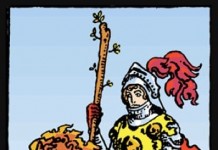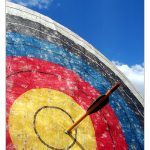Learning to use tarot cards for divination can be a fun and challenging experience. There are 78 cards in total, 22 of the major arcana and 56 of the minor arcana. Before you really begin trying to work with all the cards, however, you may want to work on some of the simpler tarot card layouts for beginners that focus mostly on the Major Arcana and not all 78 cards and their meanings all at once.

Simple Tarot Card Layouts
The simplest and most common tarot card layouts and meanings for beginners to work with are the three-card layouts. You’ll set cleanse your deck, shuffle, settle your mind on the question you want to ask the deck, and then remove the top three cards. The best questions for your deck to answer are linear path that focus on things like your past, your present and your future. You’ll read these cards as something from the past related to the card you’ve chosen is going to affect something that will happen today during the present and depending on how you respond to what happens in the present the most likely outcome is represented by the tarot card chosen for the future. Bear in mind that no matter what the cards show as your future, nothing is set in stone and however you respond to the present can affect what happens in the future changing it completely!
While a simple three-card spread can be done with only the Major Arcana, you will always get a fuller reading when you begin adding in the minor arcana and their insights as well. Once you’ve started to get a hand on the cups, wands, pentacles and swords you can use their insights to clarify answers that you’ve received in yours spreads and achieve a deeper meaning and greater enlightenment in what the universe has in store for you.
If you’re comfortable with your Major Arcana and are starting to get a grasp of the Minor Arcana then you may want to try some of the other more intensive tarot card layouts and meanings. Another very popular spread is the Pentagram spread which uses six cards each representing an element including spirit as the fifth and the person with the question. You’ll lay out a card in each of the four corners of a square and then place a single card in the center and another card above it.
The center card is the significator and represents the person for whom the reading is being done. That means if you’re doing the reading for yourself then this card represents you. The card in the upper right hand corner denotes the element of Earth. It is focused on the issues related to your question such as what could be holding you back from success. In the lower right corner is the element Air. This card shows what external forces are influencing your life. In the lower left you have the element Fire which shows what self-doubts and apprehensions you’re facing about your life and the path forward. Lastly of the cardinal elements is Water in the top left. This card helps you figure out what your intuition is telling you about your challenges and helps you to answer your questions. The last card to be turned over is the card above the center card and it represents the Spirit or soul. This card is defined by the other four each helping you understand what will happen if the significator remains on their path without changing anything.
Even though many simple beginner tarot card layouts can be done with just the Major Arcana, it is always best to wait until you have at least a basic understanding of the Minor Arcana to help you better answer your questions. In addition, a deck always gives the best readings when it is attuned to the person who will be working with it. Spend time with your deck learning the cards, their symbols and meanings. Cleanse your deck regularly to be sure to remove any lingering negative energy from it and remember that whatever you see in the cards is merely the path if nothing changes. Every decision you make will affect the future! Nothing is written in stone.


















